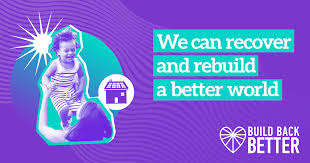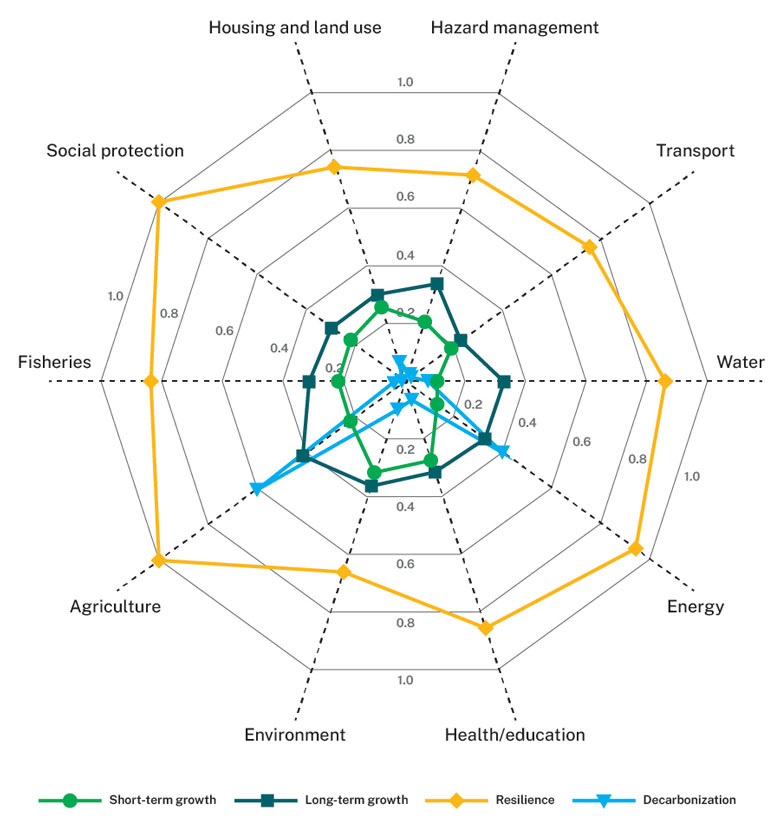
Blog shortened by Publisher
A video accompanying the final report is available here.
Like every other country, the Republic of Fiji faces the unprecedented challenge of managing the consequences of the COVID-19 pandemic. While the number of cases remains low, in a country where international tourism is a cornerstone of the economy, the implications of the crisis are massive. GDP is expected to contract by more than 20 percent in 2020, with a 75 percent drop in international tourist arrivals and 40,000 tourism jobs already lost. In response, the government is planning a 3.7-billion-Fijian-dollar stimulus package to protect the population and support economic activity.
So how should Fiji allocate these resources? Can it do so in a way that delivers short-term benefits, protecting the population against the current crisis, and achieves longer-term objectives, building a more inclusive, prosperous, and sustainable economy? How can it assess interventions that do both? And are there lessons for other countries grappling with the same challenge?
To guide countries to answer these questions, the World Bank has proposed to start from existing long-term plans – including national development plans – and developed a proposed sustainability checklist.
To inform investment decisions for the future, the Fiji Government worked with the World Bank to develop the country’s first ever Climate Vulnerability Assessment (CVA). Underpinned by the lived climate experience of the Fijian people, the CVA sought to quantify and better understand the threat posed by natural hazards and climate change to Fiji in order to help design climate adaptation and risk management plans.
The CVA identified five main areas that could significantly reduce the country’s vulnerability, including inclusive and resilient urban development, enhanced and resilient infrastructure services, sustainable agriculture and fisheries, conserving ecosystems and building socioeconomic resilience through actions on early warning and preparedness, social protection, and health care.
Figure 1: How different interventions perform along different checklist categories

Don’t reinvent the wheel, realign it
This exercise does not pretend to identify the best stimulus package for Fiji or for other countries, but to illustrate an approach to designing short-term stimulus packages that can contribute to long-term sustainable growth. Ultimately, the design of a stimulus package would require further exploration of options and interventions in line with each country’s fiscal capacity. But some clear guiding principles emerged from this analysis:
- First, start smart: Governments do not have to start with a blank slate. At a minimum, government programs related to resilience can be co-opted into stimulus measures. Other plans – either national development plans, infrastructure masterplans, Nationally Determined Contributions (NDCs), or resilience plans like the CVA discussed here – already lay out the kinds of interventions possible.
- Second, learn from the past: Prevention can often feel invisible, but the absence of destruction and disruption is a huge measure of success. Fiji’s institutional muscle memory from TC Winston offers a strong case in point.
- Third, build on communities. In disaster aftermaths, or during crises like the current pandemic, communities can play a key role in protecting the most vulnerable and the worst affected.
- Fourth, think outside the silo: The climate crisis, similar to COVID-19, affects multiple sectors, industries and aspects of our economies. Indeed, the analysis conducted here shows that no single sector is a clear priority which suggests countries have flexibility in the approach to tailoring their stimulus designs to their own needs.
A video accompanying the final report is available here.
The final report of the Climate Vulnerability Assessment can be accessed here.
A Results in Resilience Feature Story on the Fiji Climate Vulnerability Assessment is available here.
Interested to read the complete article by By Sam Fargher and Stephane Hallegatte?
www.worldbank.org/en/news/immersive-story/2020/09/17/how-to-build-back-better-after-the-covid-19-crisis-a-practical-approach-applied-to-fiji

